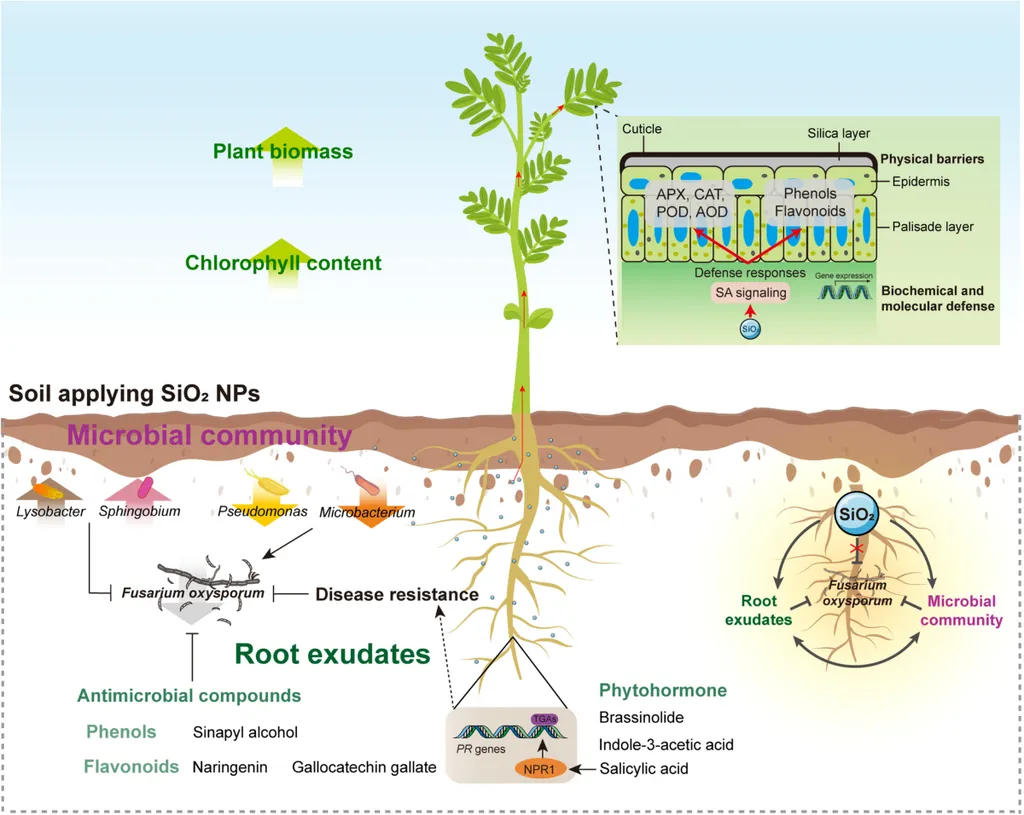In the heart of Shanxi, China, a team of researchers from Shanxi Agricultural University has made a significant breakthrough in the fight against Astragalus membranaceus root rot, a disease that has long plagued farmers and threatened the commercial viability of this valuable medicinal plant. The study, led by Niu Jingping and Liang Jianping, has identified a promising biocontrol agent, Trichoderma harzianum T9131, which not only inhibits the growth of the pathogen Fusarium solani but also enhances the plant’s resistance to the disease.
Astragalus membranaceus, also known as Huangqi, is a vital ingredient in traditional Chinese medicine, prized for its immune-boosting and anti-inflammatory properties. However, root rot caused by Fusarium solani has been a persistent challenge, leading to significant crop losses and economic impacts. “The disease not only affects the yield but also the quality of the roots, which is crucial for their medicinal value,” explains Niu Jingping, the lead author of the study.
The research team isolated and identified Trichoderma harzianum T9131 from the roots of Astragalus membranaceus affected by root rot. Through a series of experiments, they demonstrated that this fungus can inhibit the growth of Fusarium solani by an impressive 72% after just six days of confrontation. But the benefits don’t stop there. The study also revealed that Trichoderma harzianum T9131 can induce the activities of several key enzymes in Astragalus membranaceus, including superoxide dismutase (SOD), peroxidase (POD), and phenylalanine ammonlyase (PAL), as well as increasing proline content. These enzymes play a crucial role in the plant’s defense mechanisms, enhancing its resistance to the pathogen.
The implications of this research are significant for the agricultural and medicinal sectors. “This discovery could revolutionize the way we control root rot in Astragalus membranaceus,” says Liang Jianping, a co-author of the study. “By using Trichoderma harzianum T9131, farmers can potentially reduce their reliance on chemical fungicides, which can be harmful to both the environment and human health.”
The use of biocontrol agents like Trichoderma harzianum T9131 aligns with the growing global trend towards sustainable and eco-friendly agricultural practices. It offers a promising alternative to traditional chemical treatments, which can have detrimental effects on the environment and human health. Moreover, the enhanced resistance of Astragalus membranaceus to root rot can lead to increased yields and improved quality of the roots, benefiting both farmers and consumers.
The study, published in the journal Guangxi Zhiwu (which translates to “Guangxi Plants”), lays the foundation for further exploration of the biocontrol effects of Trichoderma harzianum and its mechanisms of resistance in Astragalus membranaceus. As the world continues to seek sustainable solutions to agricultural challenges, this research offers a beacon of hope for the future of medicinal plant cultivation.
The findings of this study not only have the potential to transform the way we combat root rot in Astragalus membranaceus but also pave the way for similar advancements in other crops. As the global population continues to grow, the demand for sustainable and efficient agricultural practices will only increase. This research is a significant step towards meeting that demand, offering a glimpse into a future where biocontrol agents play a central role in ensuring food security and environmental sustainability.

